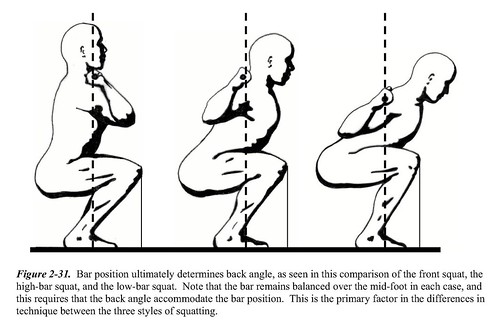On Coaching: Part 2
Going Through the Motions

Clearly this guy is working with a different model.
As coaches, one of the very first things we do when an athlete walks into the gym is to teach them to move the way we want them to move. In order to do this well, we must fully understand the movements we are teaching. We need a model in our head of how the movements are supposed to be performed. And we must know how to best break down those movements and teach them.
There are a lot of exercises out there, and for each of those exercises there are several performance criteria that must be met in order to properly execute the exercise: the model. Even for an exercise as seemingly simple as a squat there exist numerous models, and reasonable people disagree on the proper model. For example, proper depth of the squat is widely contested: knees bent to 90 degrees, parallel, below parallel and ass to ankles.
This article is not about the merits of the different models. The correct model or best model is ideally the most efficient model, the safest model and the model which you can teach most effectively. For the purposes of this article, it does not matter what your model is as long as you understand what you want to see the athlete do and you communicate it to that athlete. Furthermore, a model might have to be adjusted for athletes with injuries or other limitations. As you grow in experience your understanding of the model will change and thus you will teach it better.

Three different squats requires three different models.
Obviously having the correct model in your head is important. However, it’s more important that the coach has a firm understanding of what they are trying to teach. They should know their model backward and forward but also know how to adapt it to each athlete they train. For example, I have trained with several nationally recognized Olympic weightlifting coaches. They each taught me slightly different executions for the same three lifts. On one level, they all agree what a snatch and a clean and a jerk are, but on another level they each have very distinct models for how those lifts should be taught and executed. I hit PRs with each of these coaches, so I can’t credit any particular model for improving my performance. I give credit to each coach for being able to explain what I should be doing at that moment to hit those PRs. Ultimately, the differences between their models was irrelevant. What was most important was that the coach could get me to do what I needed to do at the moment I needed to do it.

The American Council on Exercise advocates this model.
The better you understand the model, the more effective you will be at teaching it. It is painfully obvious to even a casual observer when the teacher does not understand the material. In my opinion, you are better off teaching your clients simpler movements that you understand better than more complicated movements that you don’t understand. For example, a lot of coaches don’t have a good understanding of the model for the clean and jerk and thus have difficulty teaching it. The best course of action in that case is to teach simpler exercises that you know better while simultaneously working on your understanding of the more complex ones. You can be extremely effective at teaching your athletes deadlifts, front squats and push presses until you have a better understanding of the clean and jerk.
The best coaches have a firm understanding of their preferred model for each exercise that they teach. Often these coaches specialize in just a few exercises but know them inside and out. Their mastery of the fundamentals makes them appear to have almost magical coaching abilities, particularly when compared to their less experienced counterparts. Less is more when it comes to good coaching: better to acquire a complete, solid knowledge of fewer exercises than to know every exercise under the sun too vaguely to effectively teach any of them.
